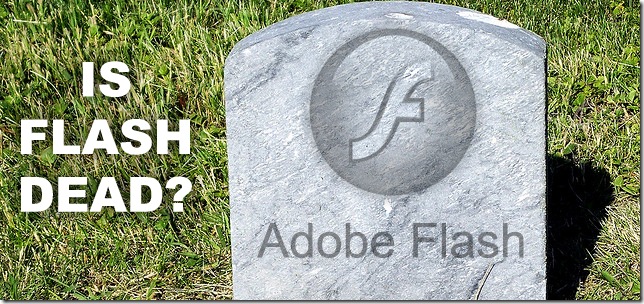 There has always been debate and controversy surrounding Flash including a very publicized feud between Adobe and Apple. Many people see Flash as outdated and flawed yet many sites still use it. It has also been adopted by Android and Blackberry phones so it would seem that there is a prominent divide. However, things have taken a dramatic turn as Adobe recently announced that they will no longer continue to develop flash for mobile browsers.
There has always been debate and controversy surrounding Flash including a very publicized feud between Adobe and Apple. Many people see Flash as outdated and flawed yet many sites still use it. It has also been adopted by Android and Blackberry phones so it would seem that there is a prominent divide. However, things have taken a dramatic turn as Adobe recently announced that they will no longer continue to develop flash for mobile browsers.
This means that there will now be a primary focus on HTML5 prompting a lot of i-told-you-sos from Apple. While this decision is currently only relevant to mobile applications, you can’t help but wonder what the future holds for laptops and PCs.
How did Flash develop?
There was a time when it looked as though Flash was going to dominate the internet. There was the attractive appeal of advanced animation and video and this was quickly picked up by various sites hoping to engage with their audience in a more dynamic way.
Adobe acquired Flash in 2005 (formerly Macromedia Flash) and set about developing it across a range of platforms. They were spreading rapidly with big plans to expand in the area of mobile browsing and hosting.
What are the pros and cons?
The obvious advantage of having a Flash site is providing a more enriched experience in animation with no additional coding entailed. There is no doubt that it offers a high level of interaction for the users as there aren’t as many limitations on text and images. Music and audio files can also be incorporated easily. This can arguably make a website more interesting and memorable.
However, for every positive there’s a negative. A factor that could put a lot of businesses and promotional sites off is that Flash makes it incredibly difficult for Google to pick up keywords and important content. This will affect the Google search engine results which is not what you want to hear when you’re trying to direct traffic to your site.
Navigation around a Flash site can be tricky. Because there are no individual pages, it makes it hard to go back to a previous page. Additionally, linking a particular page is not possible which can prove annoying when trying to share pages with others. To view and access a Flash site, a Flash player needs to be installed. This is time consuming and hardly makes for rapid and interruption-free internet browsing.
What went wrong?
Part of Adobe’s problem was that they were too caught up in the idea of spreading Flash around multiple platforms instead of concentrating on what would actually work. The release of the iPhone in 2007 certainly didn’t help matters and Adobe probably didn’t account for just how successful it would become. Instead, they focused on cheaper mobile devices.
However, when they realized the impact that the iPhone was having globally, they tried to work with Apple and encourage them to host Flash. Apple saw Flash as impractical for their devices and had a big issue with how much battery the software used. This was an on-going battle for many years and proved increasingly problematic for Adobe as Apple continued to grow and expand. This was bound to be awkward as none of Apple’s devices supported Flash.
Steve Jobs remained unconvinced about Flash saying, “Flash has not performed well on mobile devices. We have routinely asked Adobe to show us Flash performing well on a mobile device, any mobile device, for a few years now. We have never seen it.” With comments like these, the days of Flash were numbered.
What now?
Adobe have effectively admitted defeat and plan to throw their energies into developing graphic applications for HTML5 and concentrate on other areas of Flash hosting such as gaming and video. They also want to work on developing tools to work with HTML 5. Considering, how much mobile browsing has taken off and continues to expand, they really had no choice.
With mobile Flash being a thing of the past, it would appear that Flash is slowly dying out as a website creation platform. While Flash may still continue to have success through gaming and video, more and more people are realizing that Flash is not the ideal solution in terms of browser compatibility and practicality.
Users of Android and Blackberry phones are still left in the lurch as to what will happen to their browsing options and is most likely to be a case of wait-and-see.
This recent development really could signify the end for Flash as we know it.















1 Comment